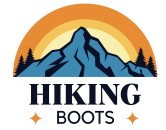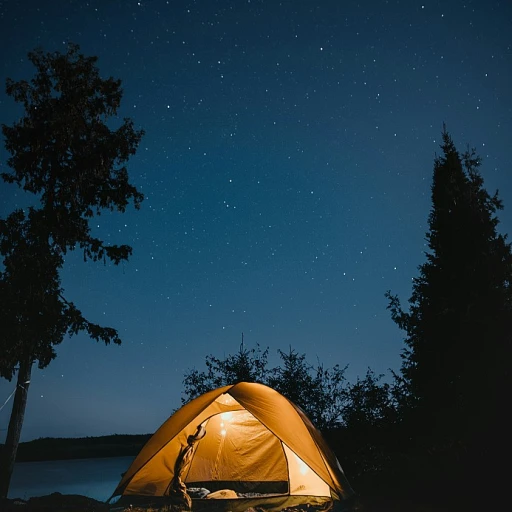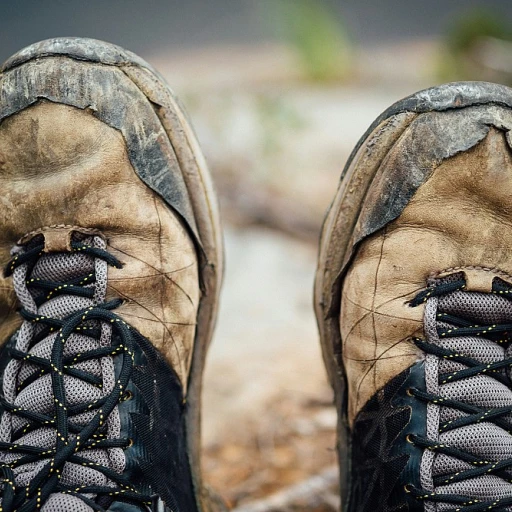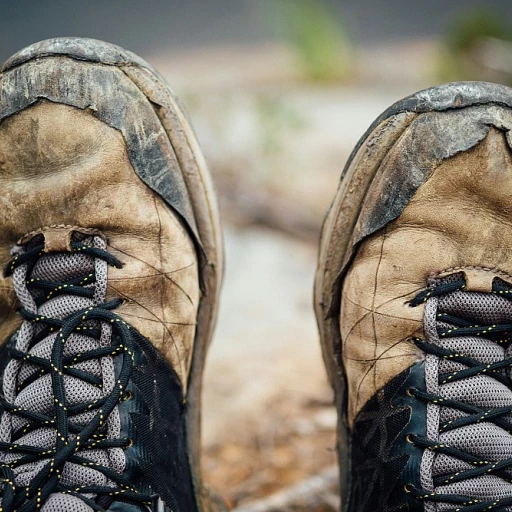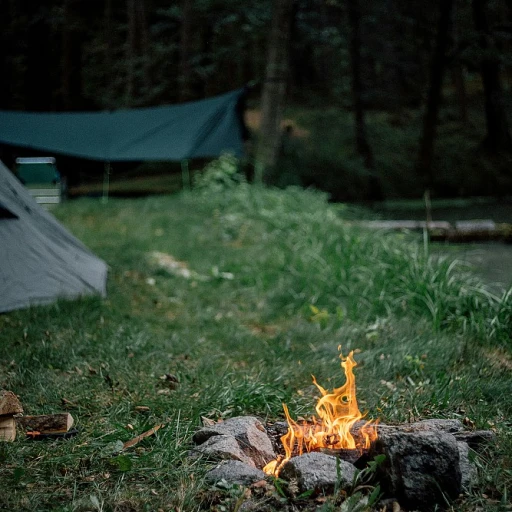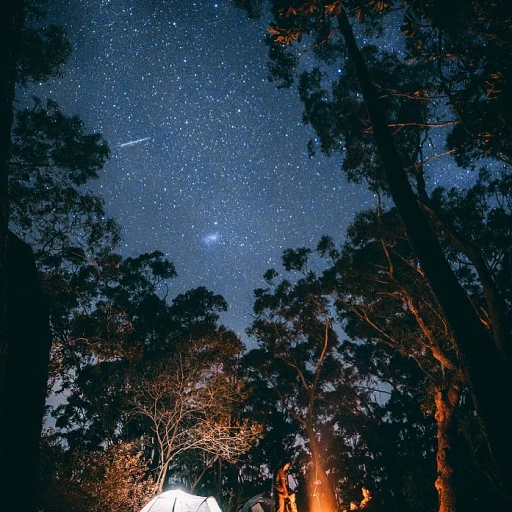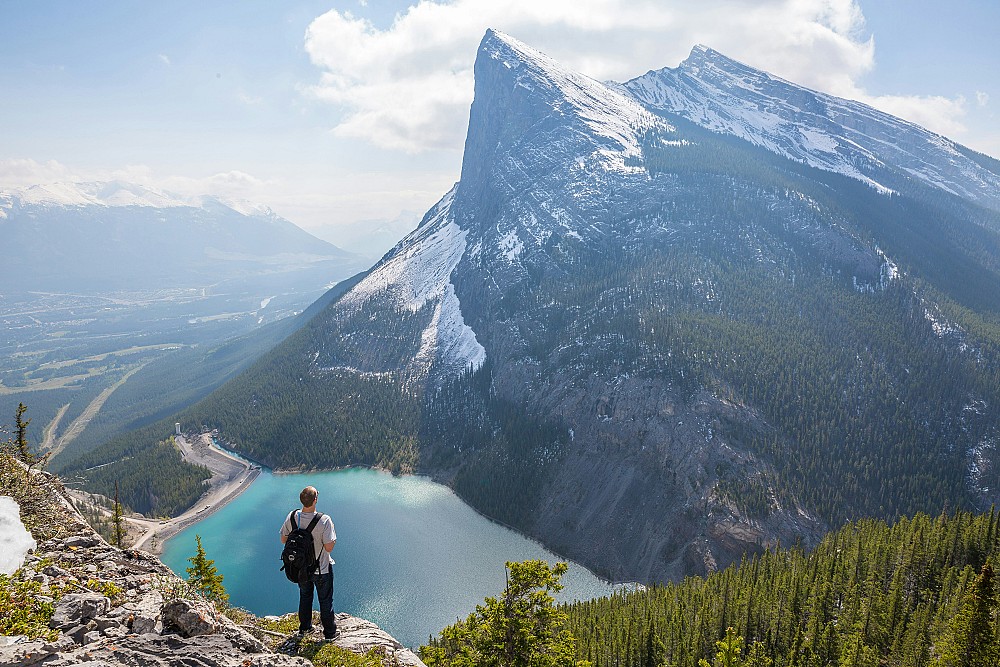
The importance of using a bear canister
Keeping bears at bay with bear canisters
Imagine you're trekking through serene trails of a national park. You set up camp, but the reality of bears looming nearby sets in. Here’s a cold fact: up to 80% of bear encounters in national parks are caused by human food. The solution? Using a bear canister.
Bear canisters may seem bulky, but they are lifesavers. These food storage devices are designed to keep bears from accessing your provisions. When bears get human food, it can lead to them becoming aggressive, necessitating park rangers to take drastic measures, including euthanizing the bear for safety.
Essential for any nature lover
Whether you're hiking for a day or backpacking through the Appalachian trail, a bear canister is non-negotiable. According to the Interagency Grizzly Bear Committee (IGBC), over 95% of bear-related incidents could be prevented with proper food storage.
Moreover, many national parks like Yosemite and Rocky Mountain have made it mandatory to carry bear-resistant canisters. Violating these rules not only endangers wildlife but could also land you with hefty fines.
Fending off food marauders
Bear canisters aren't just a precaution; they're a necessity. Renowned experts in wildlife management, such as Lynn L. Rogers, Ph.D., highlight the importance of these canisters. Studies have shown that bears learn to associate campsites with food. Utilizing bear canisters disrupts this pattern, making campsites safer.
You'll find various types of canisters on the market, from hard-sided models like BearVault and Garcia Backpacker Cache to soft-sided versions like the Ursack Major. Each has its advantages and is suited to different hiking scenarios.
Top bear canister brands to consider
Trustworthy brands for bear canisters
Bear canisters are essential for keeping your food safe during hikes, and knowing which brands offer the best options can make a big difference on your adventures. Here, we'll review top brands known for solid and reliable bear canisters.
BearVault
BearVault canisters are a popular choice among hikers. Known for their durable design and easy access, BearVault canisters have an impressive track record in the wild. A great example is the BearVault BV500, which can store food for up to 7-days for a solo backpacker, offering 700 cubic inches of storage space. Recent reviews highlight the canister's durability and ease of use, with an average rating of 4.7 stars.
Garcia Backpacker Cache
Garcia Backpacker Cache canisters are renowned for their durable, rotomolded plastic, and straightforward design. The Garcia Model 812, with 614 cubic inches of volume, is a favorite among many, especially for those hiking in bear-prone areas such as the John Muir Trail. Reviewers frequently commend its sturdy build and reliability, with an average rating of 4.5 stars.
Ursack Major
For those preferring a more flexible and lightweight option, the Ursack Major is often the go-to. This soft-sided bear-resistant food storage is made from UHMWPE fabric, which is resistant to bears. Despite being a soft-sided option, it still provides high levels of protection, though some users have noted that it might be less convenient than hard-sided canisters for packing organization. The Ursack Major garners an average rating of 4.3 stars.
Bearikade Weekender
Bearikade Weekender by Wild Ideas offers an ultralight yet robust solution. With a volume capacity of around 650 cubic inches and weighing only 31 ounces, it's ideal for long-distance hikes where every ounce counts. The Bearikade Weekender continues to receive glowing reviews, maintaining an average rating of 4.8 stars for its weight-to-durability ratio.
Bare Boxer
Finally, the Bare Boxer Contender is a compact and lightweight option perfect for short trips. It offers around 275 cubic inches of storage and weighs just 1.6 pounds, making it suitable for weekend hikers or those with minimal food storage needs. Its smaller size doesn't compromise on effectiveness, as reflected in its average rating of 4.4 stars.
When choosing the best bear canister, consider the storage capacity, weight, and the area you're hiking in. If you'd like insights on hard-sided versus soft-sided canisters, you'll love the next section!
Comparing hard-sided and soft-sided bear canisters
The basics of hard-sided canisters
Hard-sided bear canisters have become a preferred choice for many long-distance backpackers due to their durability and effectiveness. These rigid containers are typically made from heavy-duty materials such as carbon fiber, polycarbonate, or ABS plastic, ensuring that they can withstand even the tenacious efforts of a determined bear. Brands like BearVault and Bearikade are popular in this category.
Pros and cons of using soft-sided bear canisters
Soft-sided canisters, such as the Ursack Major, offer a lighter alternative to hard-sided canisters. Made from ultra-high-molecular-weight polyethylene, these flexible bags are designed to resist puncturing, tearing, and slashing. While they’re lighter and more packable, some argue they may not be as foolproof as their hard-sided counterparts. A quick tip: always use an odor-proof liner bag to enhance the effectiveness of your soft-sided canister.
Which type is best for your backpacking needs?
Your choice between hard-sided and soft-sided canisters will largely depend on the specific demands of your trip. If you’re going for a multi-day hike in bear-dense areas like Yosemite National Park or on sections of the Appalachian Trail, a hard-sided canister like the Bare Boxer Contender might be your best bet. For less bear-populated trails or shorter treks, the lighter Ursack Major could suffice. Both types need to be approved by the interagency grizzly bear committee (IGBC).
Versatility and convenience
BearVault canisters, for example, offer transparent designs that let you easily view your stored food. Wild Ideas Weekender, on the other hand, boasts an impressive volume-to-weight ratio with a capacity of around 650 cubic inches but weighing just about 1 pound 15 ounces. Many hikers appreciate the convenience of these features.
Testimonials and insights
Several seasoned hikers have shared their experiences online. A user review highlighted how a BearVault canister remained untouched overnight in a high-traffic hiking area where bears roam freely. On the same note, an avid backpacker on Amazon hailed the Garcia Backpacker Cache as “a life-saver on the JMT (John Muir Trail).” Real user insights and average ratings (usually between 4-5 stars) provide a trustworthy gauge for prospective buyers.
Volume and weight considerations for your pack
Volume matters, but so does weight
When gearing up for a trek, balancing the volume and weight of your bear canister is critical. A heavier bear canister might mean less room for other essentials, but opting for a lighter one could compromise on volume and ruggedness. Bear canisters like the BearVault BV500 offer an impressive 700 cubic inches of storage, weighing in at just 2.5 pounds, making it a top choice among backpackers.
The Bare Boxer Contender, on the other hand, offers 275 cubic inches of volume and weighs only 1.6 pounds, ideal for shorter trips or individuals aiming to cut down on pack weight. Reviews frequently highlight its lightweight nature, though some users wish for more storage capacity.
Finding the sweet spot
It’s crucial to assess how many days your hike or trek will last. For example, if you're planning a multi-day adventure in Yosemite National Park, a bear canister like the Garcia Backpacker’s Cache with 614 cubic inches and a weight of 2.7 pounds might work well. It fits snugly into most standard packs and offers ample space for 4-5 days worth of food and toiletries. In contrast, a weekend hike on the Appalachian Trail might be perfectly served by something as compact as the Ursack Major, which although being a soft-sided option, proves to be both lightweight and bear-resistant.
Reliability over bulk
Avoid over-packing by prioritizing calorie-dense foods and compressible items. Expert hikers recommend taping meal lists and calorie counts to the outside of the container, ensuring you can keep track and repack items efficiently. Wild Ideas Weekender is frequently praised for maintaining a balance between volume and weight, with 650 cubic inches at 1.9 pounds, making it a solid choice for keeping your bear canister neither too full nor too empty.
“Always remember that a well-packed bear canister can mean the difference between a leisurely trek and bear-induced trouble,” says John Zaugg, an expert hiker who vetted numerous bear canisters on the JMT (John Muir Trail).
Choosing the perfect bear canister involves a careful blend of volume and weight considerations. Make sure your chosen bear canister is recognized and approved by the Interagency Grizzly Bear Committee (IGBC) to ensure it meets rigorous standards of bear resistance. Most national parks also offer specific recommendations and requirements for bear canisters, so doing your research is key to a safe and enjoyable experience.
Bear canisters approved by national parks
Why national parks enforce the use of bear canisters
Bear canisters are not just a recommendation in many national parks—they're a requirement. In areas with a high density of bear populations, such as Yosemite National Park, Rocky Mountain National Park, and the Appalachian Trail, ensuring that human food is stored in bear-resistant containers is crucial for both hiker safety and bear conservation.For instance, Yosemite National Park has strict regulations on food storage. According to the National Park Service (NPS), all food, trash, and scented items must be stored in an approved bear canister to prevent bears from associating humans with an easy food source. This practice helps reduce dangerous encounters and keeps both bears and humans safe.The Interagency Grizzly Bear Committee
Another significant player in bear canister regulations is the Interagency Grizzly Bear Committee (IGBC). This committee is responsible for testing and approving bear-resistant products that meet specific criteria for preventing bear access. When planning your backpacking trip, make sure to look for canisters that are IGBC approved. BearVault and Ursack Major are two brands that have passed IGBC testing standards, providing assurance that these products are bear-resistant even in grizzly bear territories.Approved bear canisters: what's on the list?
Let's talk specifics. Some of the top-rated and approved canisters include the BearVault BV500 and the Garcia Backpacker Cache. The BearVault BV500, for example, offers 700 cubic inches of storage and weighs just 2.7 lbs, making it both spacious and lightweight. On the other hand, the Garcia Backpacker Cache is known for its durability and ease of use, although it's slightly heavier at 2.7 lbs.Ursack Major is another fantastic option, especially if you're looking for a soft-sided alternative that meets park requirements. Though it's not hard-sided, it's an IGBC approved bear-resistant food sack. This lightweight option offers flexibility and is easier to pack, making it a favorite among ultralight backpackers.Why carrying a bear canister should be non-negotiable
Ultimately, the importance of carrying a bear canister goes beyond personal convenience. The National Park Service (NPS) reports numerous incidents where improper food storage has led to bears becoming habituated to human food, which often results in the bear being euthanized to protect public safety. By adhering to bear canister regulations, hikers contribute to the preservation of wildlife and help maintain the natural balance.In conclusion, always check the requirements of your destination before heading out. While it might seem cumbersome, the benefits of using a bear canister cannot be overstated—ensuring both your safety and the well-being of our bear populations.User reviews and average ratings
Insights from fellow adventurers: user reviews and average ratings
When it comes to choosing the best bear canister for your hikes, user reviews and average ratings play a crucial role. Not only do they provide real-world feedback but they also help you avoid common pitfalls.
Take for example the BearVault BV500. With an average rating of 4.5 stars on Amazon, this model is highly recommended by hikers for its durability and generous volume of 700 cubic inches. Users frequently highlight its ease of use and effectiveness in keeping bears at bay.
Another top contender is the Ursack Major, which is rated around 4.3 stars. Many trekkers appreciate its lightweight quality, but some have noted that its effectiveness hinges on meticulous knot-tying and proper usage guidelines. It's also worth noting that the Ursack Major is IGBC approved, which means it's been tested by the Interagency Grizzly Bear Committee.
Outdoor enthusiasts also speak highly of the Garcia Backpacker Cache, which has earned a solid 4-star rating. Known for its sturdy build and effective bear-resistant design, it's a popular choice among those trekking in national parks where hard-sided canisters are mandated by the National Park Service.
For those opting for a more premium option, many users give a thumbs-up to the Bearikade Weekender. This model combines a lightweight build with a large storage capacity of 650 cubic inches. However, its higher price point and limited availability can be a drawback according to some user reviews.
User feedback also sheds light on the Counter Assault Bear Keg. With an average rating of 4.2 stars, this model is frequently praised for its robust design and IGBC approval but is critiqued for being on the heavier side.
To tie it all together, real user experiences and ratings help provide a grounded perspective, ensuring you choose a bear canister that's best suited for your specific hiking needs. Ensure to cross-reference these reviews with the guidelines provided by the National Park Service for a safe and enjoyable journey.
Case study: Successful food storage with BearVault
BearVault: A real-world example of successful food storage
Imagine you're out on a multi-day hike in Yosemite National Park. You've got your trusted BearVault canister packed with all your essentials. The sun is setting, and you spot a bear off in the distance. Instead of panicking, you feel prepared—you know your food is secure.
A study published in the Wildlife Society Bulletin states that bear-resistant containers like BearVault significantly lower the chances of bears getting into human food. In fact, national parks report that incidents with bears have dropped by nearly 90% in areas where bear canisters are required.
Rangers from Yosemite National Park frequently recommend BearVault canisters, and for good reasons. These canisters are straightforward to use and tough enough to withstand even the most determined bears. For instance, the BearVault BV450 and BV500 models provide an ideal combination of volume and weight—perfect for both short trips and extended backpacking adventures.
Consider a hiker named Emily who shared her experience on Amazon. She praised the BearVault BV500 for its 700 cubic inches of storage and easy-to-open but secure lid. According to her review, the canister made meal prep simple and efficient while ensuring zero bear encounters. Her review was part of an average 4.6-star rating from over 1,500 users.
Similarly, a case study by the Interagency Grizzly Bear Committee revealed that proper food storage dramatically reduces bear incidents. They highlight BearVault as one of the most reliable canisters, quoting one expert who said, "The BearVault canister offers a perfect balance between weight and durability, making it a top choice for backpackers."
Another user, John, took his BearVault on a week-long trek along the John Muir Trail. He noted that the BearVault's transparent design made finding meals easy, reducing the time spent rummaging through his pack. Additionally, its weight—just 2 lbs 9 oz for the BV500—fit well into his pack, providing ample space for his other essentials.
While there are many bear canisters on the market, empirical data and numerous user reviews make BearVault a standout choice for most hikers. With proven success in the wild and high ratings, it's no wonder that BearVault remains a favorite for both seasoned backpackers and those new to bear country.
Tips for maximizing space and efficiency
Smart packing techniques
Maximizing space in your bear canister can be a game-changer on your hike. One of the best bear canisters, the BearVault BV500, offers impressive volume, but efficient packing is key. Experienced hikers recommend starting with the densest, non-compressible items first. This approach helps to make the most of the canister’s available space.
For instance, if you’re carrying bulky freeze-dried meals, consider opening them up and repackaging them into zip-lock bags. This can reduce their original volume dramatically. According to a study by the Interagency Grizzly Bear Committee, hikers can gain between 20 to 30 percent more space by repacking items.
Food organization hacks
Organizing your food in layers can also be effective. Pack your bear canister with the items you'll need first on top—for example, lunch or snacks for the day. This way, you don't have to rifle through the entire canister each time you need something, preserving space and keeping your pack organized. During backcountry trips, a little bit of organization can make a world of difference.
Using smaller storage bags within the canister can help keep things organized and can be particularly beneficial when you need to access something quickly. According to user reviews, the Ursack Major is praised for its versatility in organizing small items.
Creative space savers
Another tip is to use air-tight containers for items like trail mix or granola bars. Not only do these containers keep your items fresh, but they also prevent them from being crushed and becoming a hassle to grab on the go. In a pinch, using cook pots or even collapsible cups can work as additional storage spaces within your canister.
Rae Frantz, a seasoned through-hiker of the Pacific Crest Trail, suggests carrying multi-use items to save space. For example, a titanium mug that can be used both for drinking and for holding small, crushable snacks is a smart way to minimize space.
Plan your meals thoughtfully
Think about your meal plans and calculate accurate portions to avoid overpacking. According to a report by the National Park Service, hikers often overestimate the amount of food needed, leading to inefficient use of space. Opt for high-calorie, low-volume foods that offer the most nutritional bang for your buck, such as nuts, dried fruits, and jerky. This ensures your bear canister is filled economically while providing the necessary sustenance during your journey.
Leveraging expert insights and real-world user experiences can make your bear canister packing process more efficient. Proper food storage can make your backpacking trip more enjoyable and possibly safer from bear encounters. Remember, the key is to minimize waste and optimize space.
